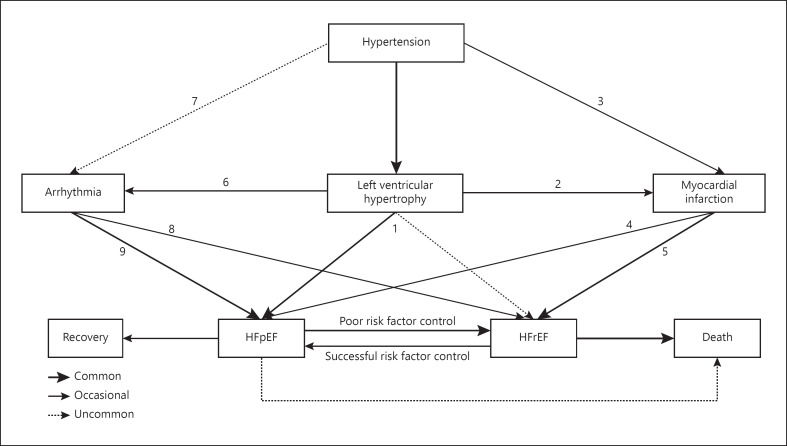Fig. 2.
Pathophysiology of hypertensive heart failure. HT progresses to LVH. Along with this process, the patient's condition can directly develop to symptomatic HF with preserved ejection fraction (HFpEF) or HF with reduced ejection fraction (HFrEF) (pathway 1). Hypertensive patients with progression to LVH (pathway 2) or without LVH (pathway 3) who suffer MI may develop to HFpEF (pathway 4), and more prevalent develop to HF with reduced ejection fraction (HFrEF) (pathway 5). HT is associated with a variety of cardiac arrhythmias, most AF. Arrhythmias may occur in hypertensive patients, commonly with LVH progression than without LVH (pathway 6 and 7). AF is more common to develop HFpEF (pathway 8) than to HFrEF (pathway 9). HFpEF patients who commonly suffer MI and poor risk factor control develop HF with reduced ejection fraction (HFrEF). HFrEF patients with successful risk factor control and treated with evidence-based medication may improve to HFpEF condition. A thicker arrow shows a more common pathway compared with a thinner arrow. HT, hypertension; LVH, left ventricular hypertrophy; AF, atrial fibrillation; MI, myocardial infarction.

